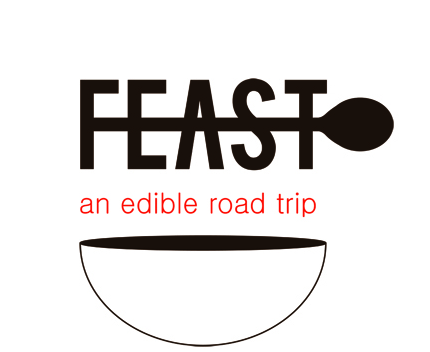Market Culture and finally, Poutine
Montreal is a city known for its many diverse neighbourhoods. Each is a mix of commercial and residential, possessing their own cheese shops, butchers, various boutiques, and privately run grocers and markets. Wandering through the city, you’ll know you’ve entered a new neighbourhood because the lampposts will change.
This was a tip we learned from Ruby Roy, our tour guide for the day. Ruby pioneered food tourism in Montreal nearly 20 years ago, and she drove us all over the city to learn about its culinary traditions. We viewed the city from atop Mount Royal, ate some pretty phenomenal brownies from La Maison Cakao,
and had one of Patisserie Alati Caserta’s signature cannolis.
Montreal has a significant and well-supported market culture. There are four large, city-owned historic markets positioned throughout the city (Atwater, Jean-Talon, Maisonneuve and Lachine), each with their own legacy and specialties.
We visited the Atwater (est. 1933) and the Jean-Talon (est. 1931) markets with Ruby, who told us why each are distinct. The Atwater Market is the most expensive of the city markets due to its proximity to downtown, but it is also the most prominent meat, cheese, and flower market in the city.
There are at least nine butchers and three cheese shops there, and in the spring, much of the parking lot disappears and to make room for the abundance of fresh flowers.
Jean-Talon Market, perhaps the most famous and certainly the biggest of the four markets, covers 3.5 city blocks with food vendors of all kinds.
It also has the most produce; ninety percent of the produce sold at the markets is grown or produced in Quebec, and each local stall features a Quebec flag and the number of kilometers the food has travelled to get there.
As we walked around, we munched on freshly-boiled, buttered corn from a local family farm. They sell thousands of cobs out of the back of their truck each week.
On our tour, Ruby also took us to sample some of the province’s infinitely famous poutine. Quebec is its birthplace, and Canada is known everywhere for this gravy laden dish - it’s typically the answer anyone gives when asked, “What is Canadian food?”
Over the years, poutine has evolved and many iterations now exist. The original, however, is made with a thin chicken or turkey gravy and (preferably raw milk) curd cheese. These two ingredients are placed atop fresh cut potatoes, which have been put on ice—but not frozen—before being fried. This ensures the fries are neither mushy nor too oily.
The dish originated in rural Quebec in the late 1950’s and while there are many origin stories, the most likely, as Ruby told us, is this: A man went to the market and everything he purchased when into the same bag. When asked what he was going to do with it all he replied “ça va faire une maudite poutine" ("it will make a damn mess"). He went home, and made the dish of tangled curds and potatoes that we now call ‘poutine’. The gravy was allegedly added later as a way to keep the fries warmer longer.
A fine mess it is.
Many thanks to Ruby for a fantastic tour!
-DV






